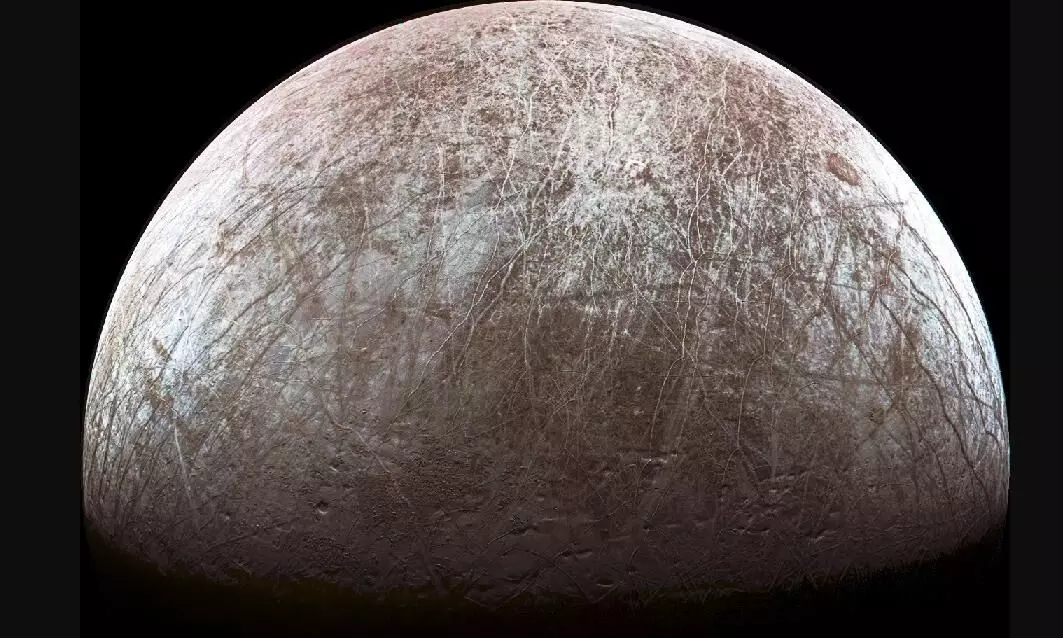
NASA to launch probe to Jupiter's moon in search of life
text_fieldsJupiter's moon Europa. (NASA)
Pasadena/US: NASA is planning to launch a probe to one of Jupiter’s moons in search of extra-terrestrial life, scientists from the US’s space agency revealed on Thursday. NASA’s Clipper spacecraft will head to Jupiter’s moon Europa- one among its 12 moons- in October, Agence France-Presse reported.
The mission’s project scientist, Bob Pappalardo, told AFP that NASA wanted to understand whether life is only there on Earth, which is one of the fundamental questions. He said that if they were to find the conditions for life and someday they find life in a place like Europa, that would mean that in our solar system, there are two examples of life: Earth and Europa.
The Clipper probe is a USD 5 billion project, which is isolated in a facility in the Jet Propulsion Laboratory in California. NASA wanted the probe to remain free of earthly contaminants.
The probe will be carried by Space X Falcon Heavy rocket and is expected to travel for more than five years before it reaches its destination. The journey involves passing by Mars at pick-up speed. It is expected to reach Europa in 2031 and will begin a detailed study of the moon, which is believed to be covered in frozen water.
The probe is equipped with cameras, spectrometers, a magnetometer and a radar that is intended to find the thickness of ice on Europa’s surface and where liquid water is located. However, the mission is not expecting life in Jupiter; it wants to know whether conditions can support life.
However, the mission is not going to be easy since Europa has a powerful radiation field around it, which is equivalent to 1,00,000 chest X-rays in every circuit around it.
Also, the distance between Earth and Europa means a 45-minute delay in communications.
The next challenge, despite being equipped with massive solar panels, is keeping the Clipper powered, which is a major challenge, scientists say. Right after launch, the panels’ output will be 23,000 watts, but it will be reduced to 700 watts once it reaches Jupiter, which is very far from the Sun. When it is near the Earth, the panels could power 20 houses continuously, but near Jupiter, just a few light bulbs and some small appliances.
NASA started planning the mission in the late 1990s, and the mission is expected to end in 2034, after which the probe will reach the end of its useful life. After the agency is done with the probe, they will crash it into one of the other bodies in Jupiter’s system.























